Check out this link as we head into Week 2 of the 4th Annual Texas Pollinator BioBlitz! https://content.govdelivery.com/accounts/TXPWD/bulletins/263c397
I challenged myself to the “Something Blue” from the Daily Challenges last week and found a Red-Shouldered Bug — what’s not red is blue, in real life — a startling bug color to come upon.

Track minute-by-minute leaderboard standings at this link”
https://www.inaturalist.org/projects/2019-texas-pollinator-bioblitz
At this writing (at this particular minute) I’m 3rd for Most Species. In the next minute, I might be knocked back down to 5th place.
Currently, the Most Observed Species is the Gulf Fritillary — the Monarch has been a close second and will probably top the list soon. Interestingly, the Western Honey Bee is holding onto 3rd most observed species. I know my yard has a Western Honey Bee in nearly everything with an open bloom, no matter the color.
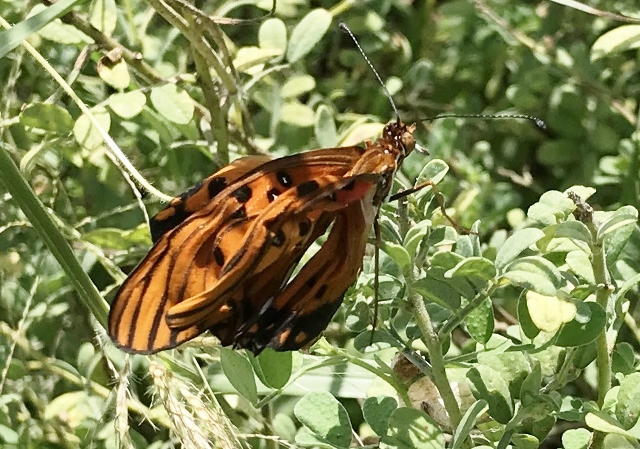
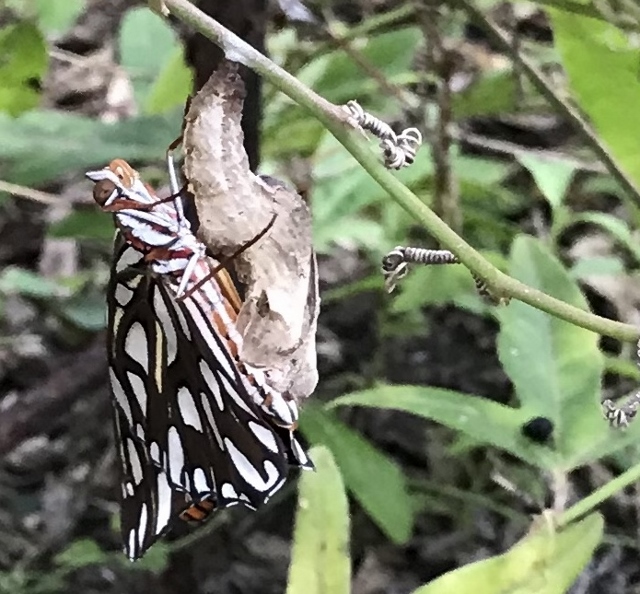

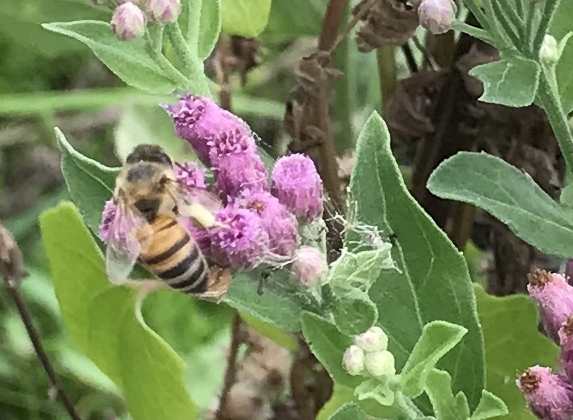
I specifically planted Dalea Scandens in order to entice Southern Dogface Butterflies. And VOILA! It worked! I’m watching this plant for the next five days or so because if I’m correct, I’ll be seeing Southern Dogface caterpillars.
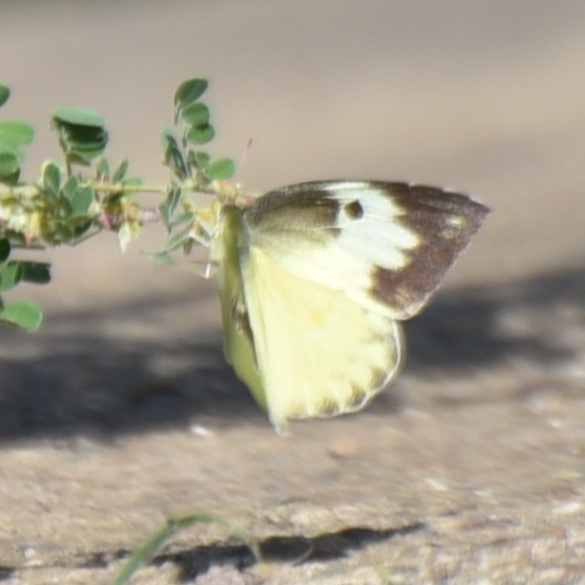
Many of you’ve seen me write this, or say it in one of my presentations, that my theory (borrowed and adapted from a long-ago economics class) is, “Plant it and they will come!” The Southern Dogface butterfly validates that theory, as does this most beautifully colored Guava Skipper. I love the turquoise stripes! The Guava Skipper uses, unsurprisingly, a Guava tree as a host.
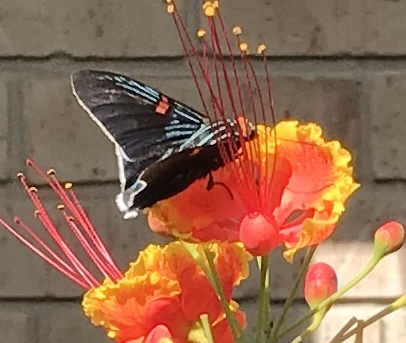
I planted a Guava tree two years ago. The tree is about 2 ½ feet tall and it produced more than two dozen guavas this year. What I can say about guavas is that they smell like skunk. Even though I left the fruit neatly on the ground for our opportunistic Opossums, I must confess, the skunky-smelling fruits rotted in place. Fortunately the September sun dried them up fairly quickly.
A cold front moved in. This is exciting because it means you can race down to your favorite nursery or native plant nursery person and buy plants to attract pollinators — AND plant them today! This is an opportune time to put something in the ground because the temps are lower and the plants will experience less
Find a list of local native plant sellers on our chapter website, https://www.rgvctmn.org and link to the list under Interesting Links and RGV Plants
https://rgvctmn.org/rgv-plants/
I haven’t tweaked it recently — if you find where it can be improved, please e-mail me: jjvanm@gmail.com
You can either buy, and plant, your favorite nectar plants or plant for the butterflies you want to bring to your yard. Whichever way you choose, you’ll be providing for other pollinators as well.
An excellent butterfly host plant guide is at this link:
https://www.naba.org/chapters/nabast/plants_info.pdf
Hummingbirds are pollinators, too, as are beetles and moths. Check out this iNaturalist link for a comprehensive list of pollinators and flowers that count in this BioBlitz- Polinators challenge. Scroll down to the Project Requirements
https://www.inaturalist.org/projects/2019-texas-pollinator-bioblitz
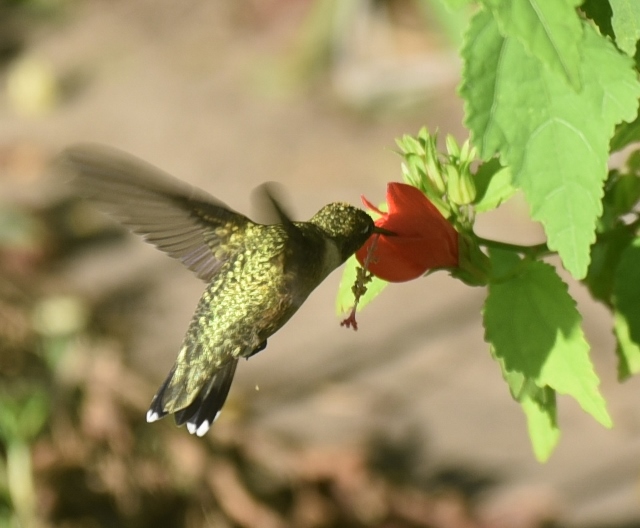
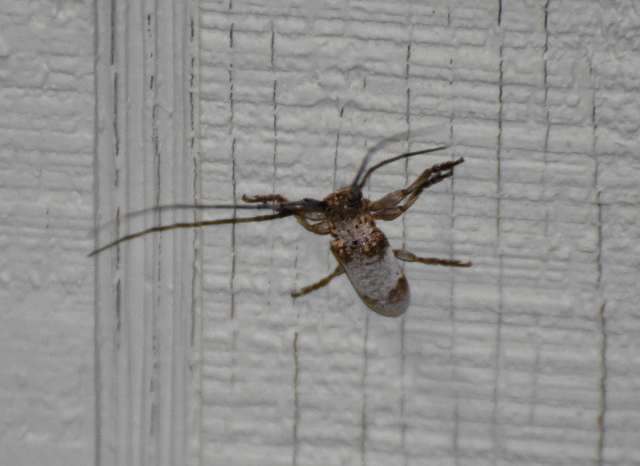
Some names ya just gotta fall in love with, like this very cool, shades of grey, Indomitable Graphic Moth — it resembles a design I once did in a graphics class.
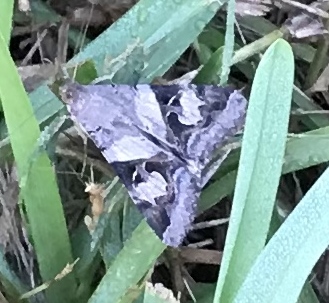
While you’re on that link, note that the 2nd Vice President of our sister Texas Master Naturalist chapter, South Texas Border Chapter, Elizabeth Perdomo is leading the Most Species category with 193 and Most Observations. GREAT JOB, Elizabeth!
There’s no prize for being first in these challenges — what’s important is to document what we’ve got in our environment.
You may have noticed that pristine photography is not required to enter photos into iNaturalist. It is important to use photos that show the identity of the subject.
Using iNaturalist is fun in that it does most of the work and takes the burden of research off your hands. For instances, if you think there’s too many skipper butterflies and your eyes cross and head spins, let www.iNaturalist.org help you decide, like I did in the following examples.
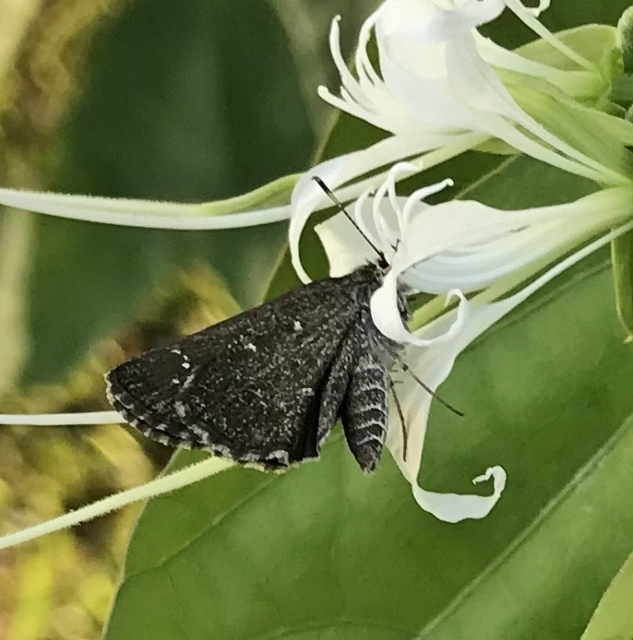

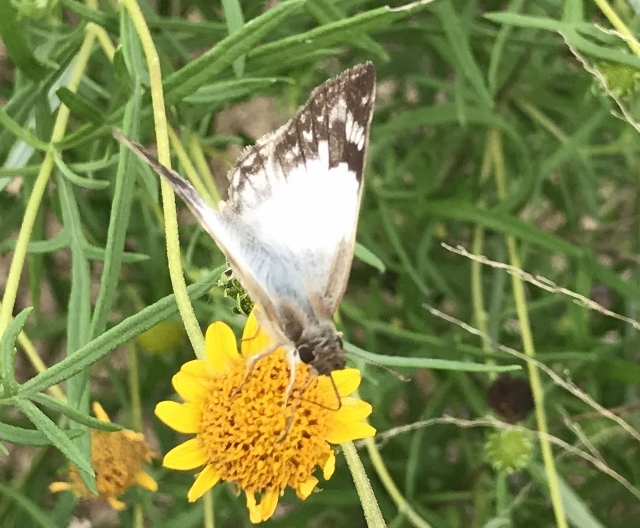
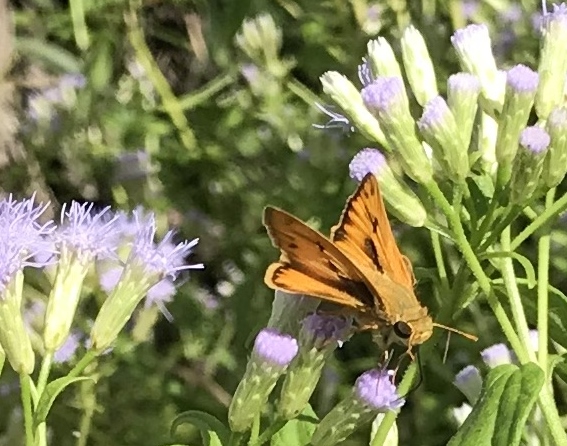
Loved the photos! Another great article Anita!
Thank you, Carolyn! You could be doing the same up there in New York. You have some wonderful milkweeds, if I recall. How are they doing this year?